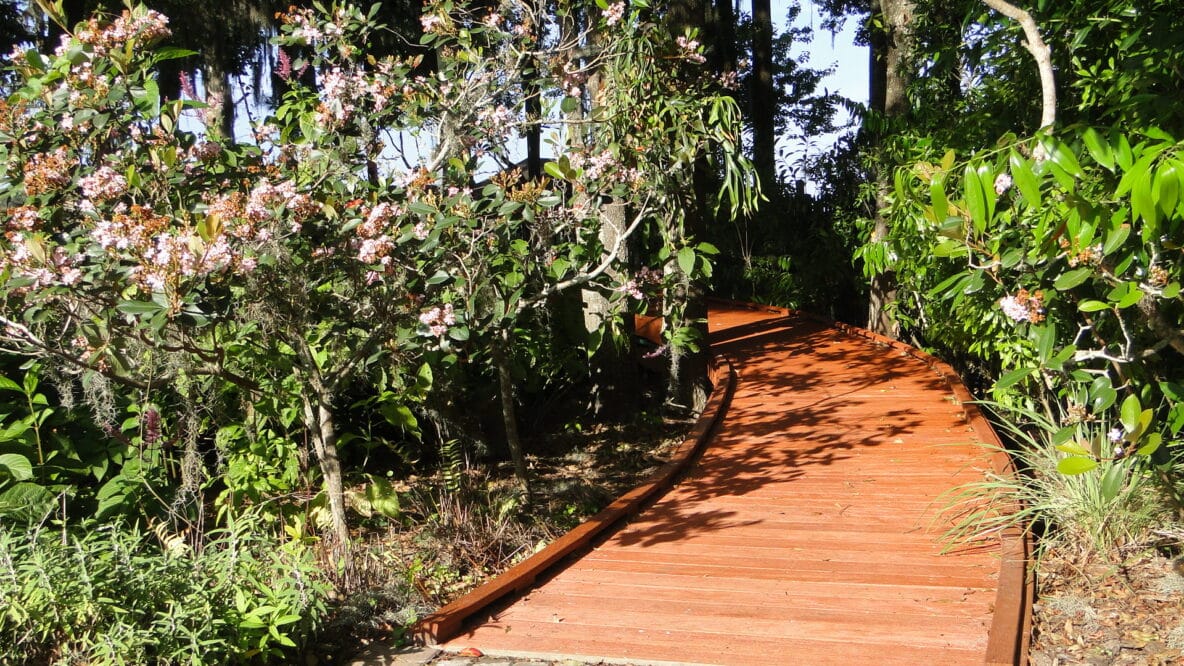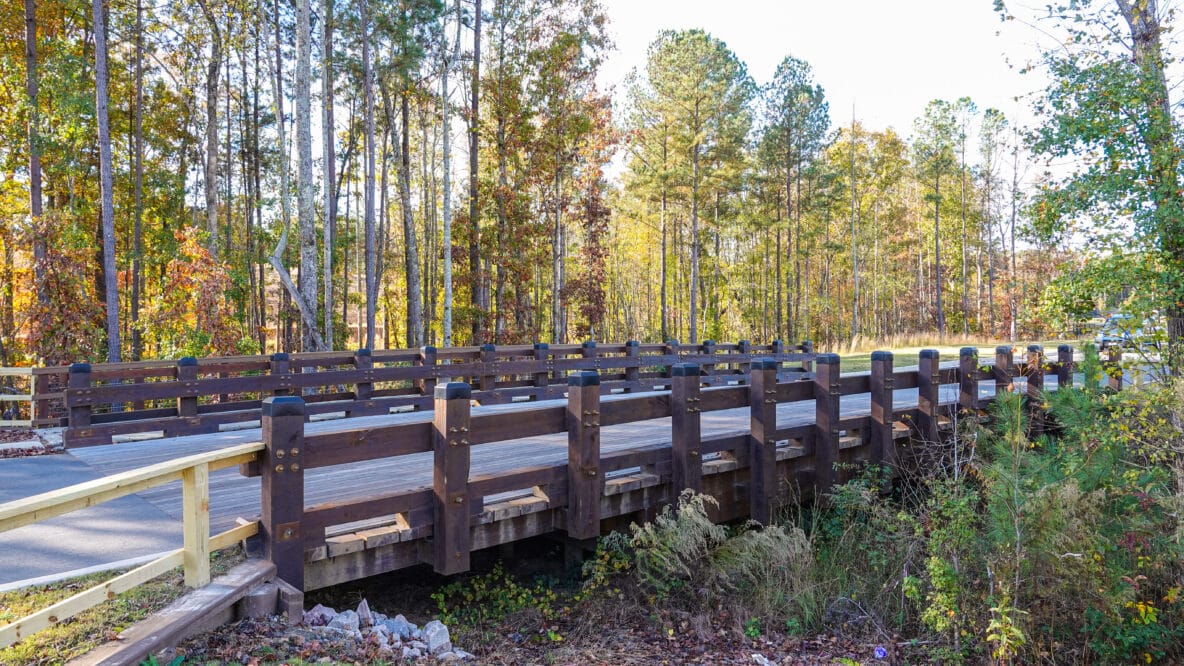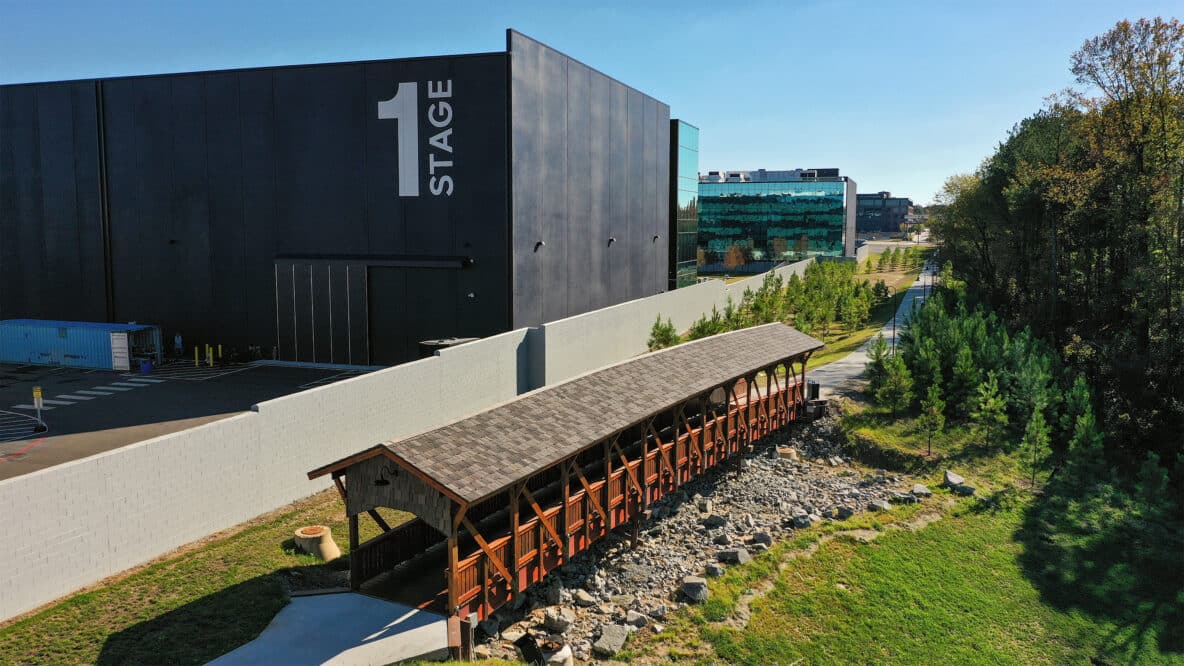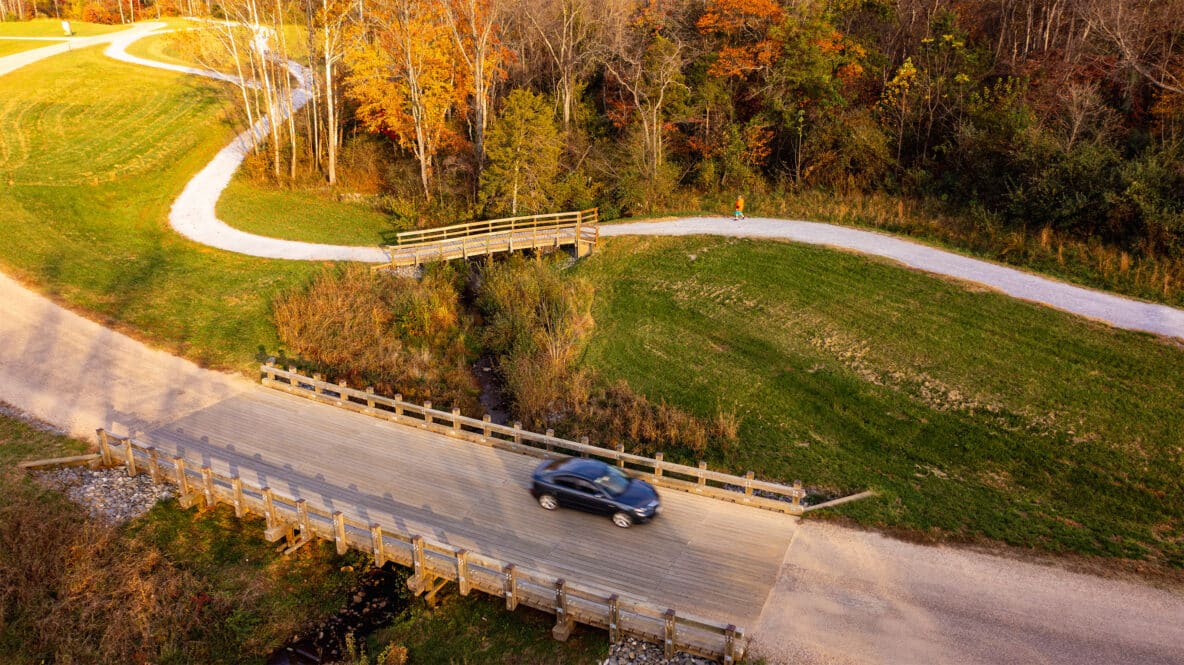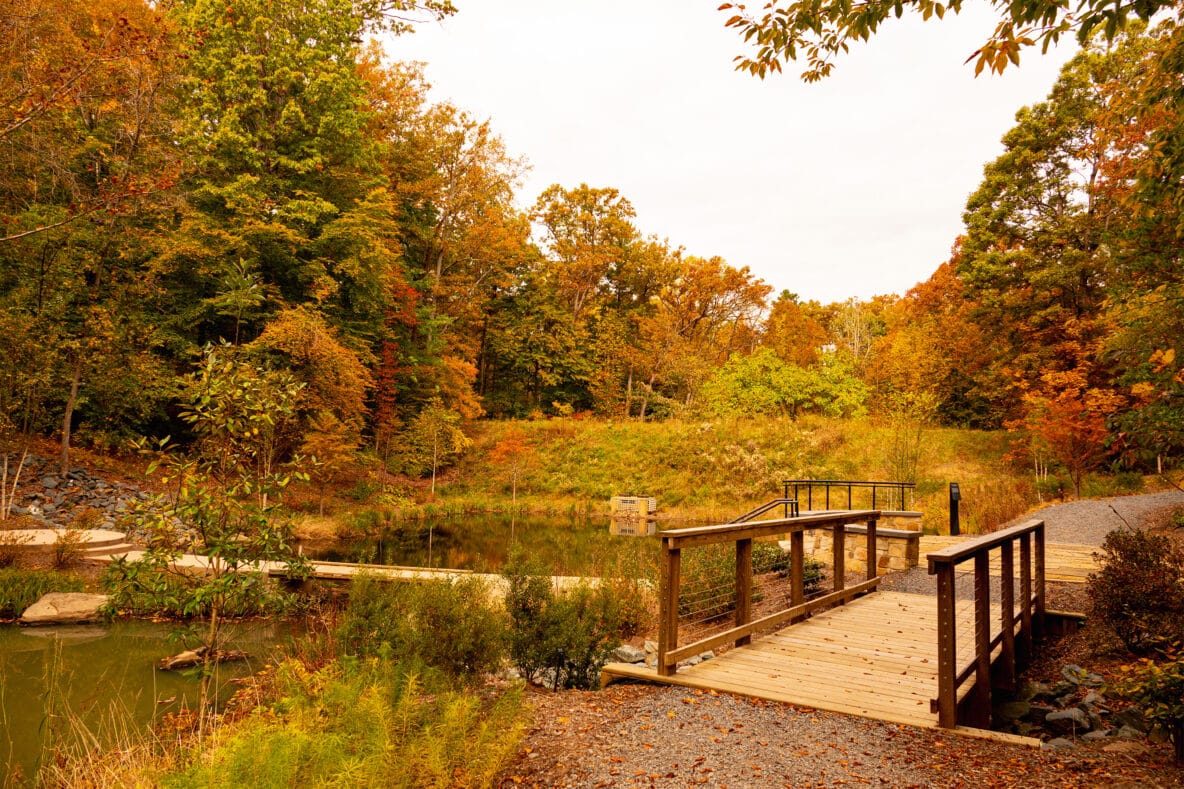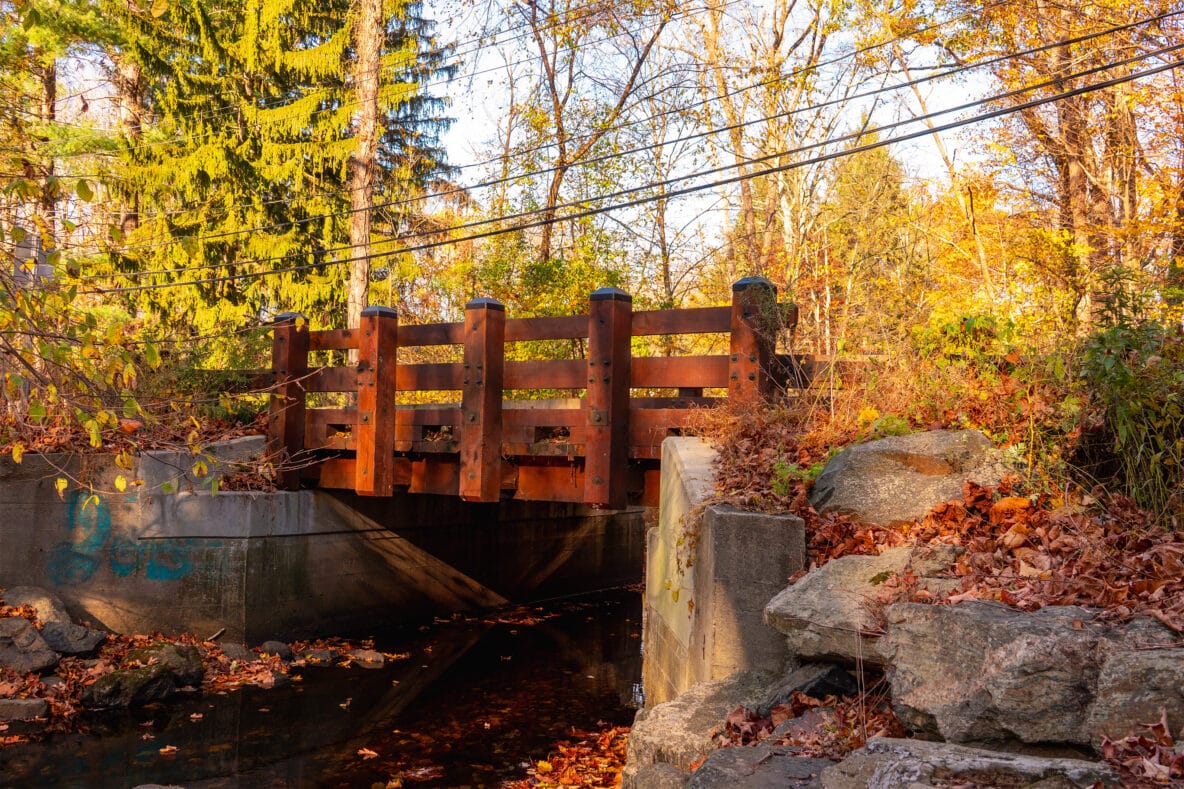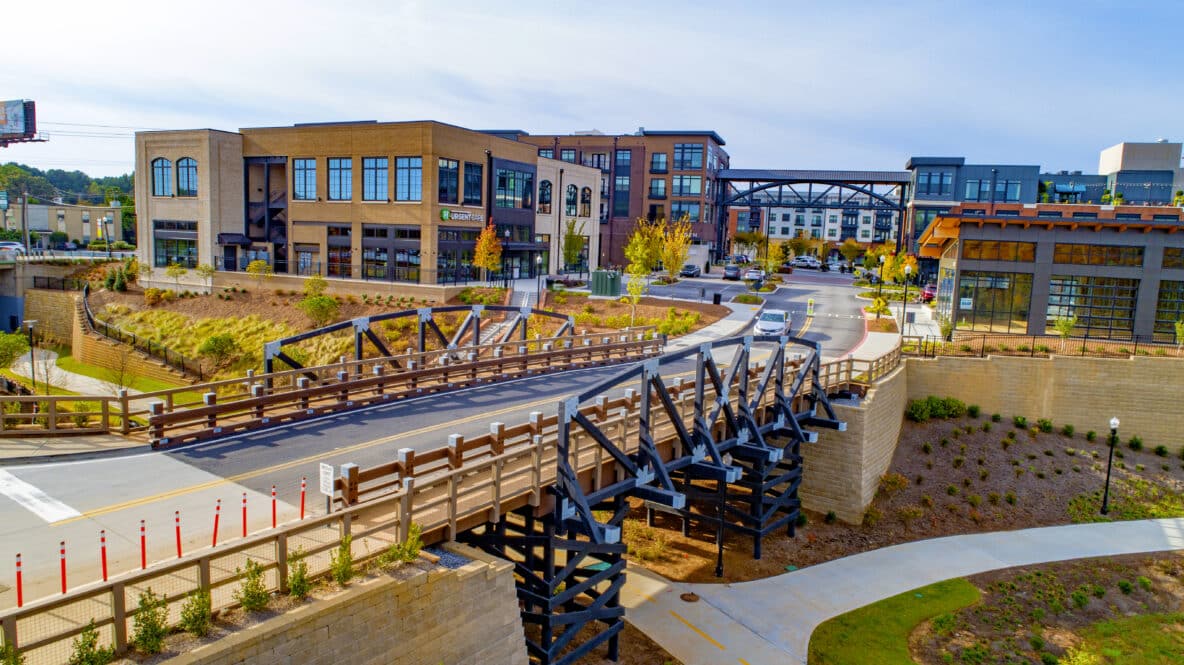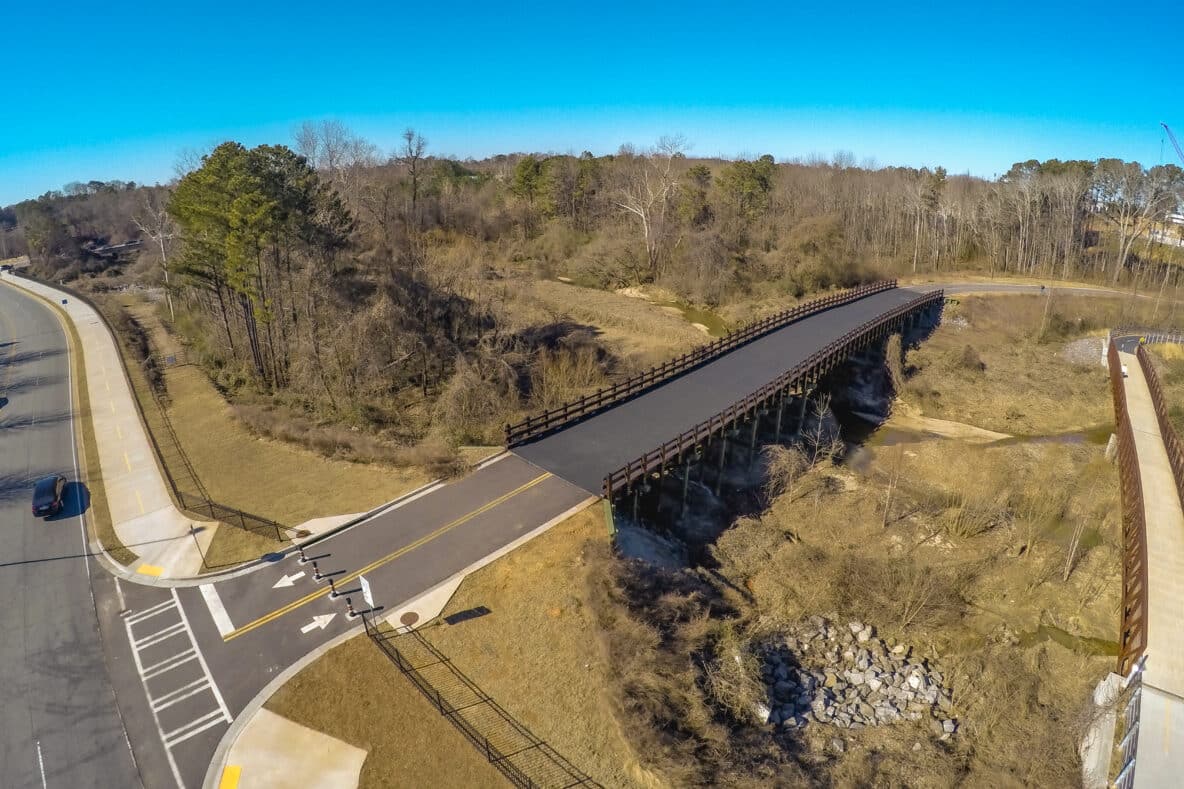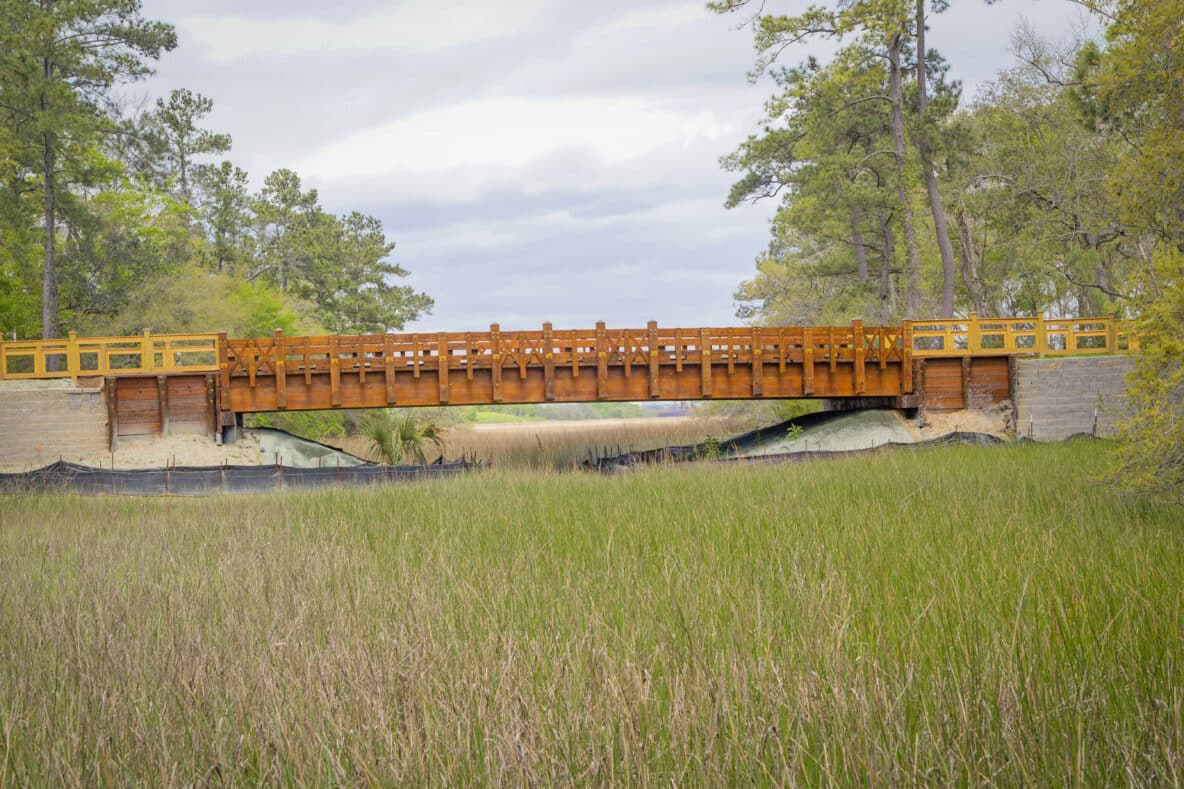Explore the benefits of sustainable boardwalk design by York Bridge Concepts. Discover how they combine durability, aesthetics, and eco-friendliness.
Pleasant Park Vehicular & Pedestrian Bridges – Apex, NC
York Bridge Concepts’ work at Pleasant Park exemplifies their expertise in creating sustainable, high-quality timber bridges. By combining innovative design, efficient construction, and environmentally conscious materials, YBC has delivered bridges that harmonize with nature and enhance the park’s appeal.
Assembly Studios Covered Pedestrian Bridge – Atlanta, GA
Assembly Studios, an extension of Universal and Comcast’s film production companies, envisioned a covered pedestrian bridge that would not only enhance the community’s infrastructure but also serve as a striking backdrop for film productions. YBC brought this vision to life with their expertise in timber bridge construction, delivering a structure that balances utility, charm, and cinematic allure.
York Bridge Concepts: A Year In Review – 2024
As 2024 draws to a close, York Bridge Concepts (YBC) reflects on a year of exceptional projects, innovation, and sustainable development. Our timber bridges have connected communities, enhanced natural and urban landscapes, and proven that sustainable solutions can meet the most rigorous demands. Here’s a comprehensive look at the projects that shaped 2024, showcasing our craftsmanship, engineering excellence, and environmental stewardship.
Thomas Jefferson Poplar Forest Vehicular & Pedestrian Timber Bridges – Virginia
The Poplar Forest bridges represent the best of York Bridge Concepts’ commitment to sustainable, beautiful, and functional bridge construction. These bridges fulfill a vital role in connecting the community to its amenities, while seamlessly blending with the historic and natural landscape. YBC’s approach showcases how infrastructure can be both functional and ecologically sensitive, supporting community needs while preserving the legacy of Thomas Jefferson’s cherished retreat.
University of Virginia Forum Hotel Pedestrian Bridges – Charlottesville, VA
The timber pedestrian bridges by York Bridge Concepts at The University of Virginia and The Forum Hotel are more than functional walkways—they are lasting pieces of art that symbolize harmony between human infrastructure and nature. These bridges embody the principles of thoughtful design, sustainable construction, and environmental respect, creating spaces where visitors can enjoy the landscape and find moments of peace.
Poverty Hollow Vehicular Timber Bridge – Redding, CT
YBC’s expertise in timber bridge construction ensures that the Poverty Hollow Bridge will stand the test of time, providing safe passage for the Redding community for decades to come. With an eye toward the future, YBC continues to lead the industry in creating sustainable, durable bridges that enhance both infrastructure and natural landscapes.
The Role of Wood Bridges in Green Infrastructure
Investing in sustainable infrastructure like wood bridges, we are taking significant steps toward reducing our carbon footprint, preserving natural ecosystems, and creating cities that are not only functional but also beautiful and in harmony with the environment.
Wood Bridges Versus Concrete Bridges: A Comprehensive Comparison
When it comes to the choice between wood bridges and concrete bridges, wooden bridges, particularly those designed by York Bridge Concepts, offer a compelling array of advantages.
Sustainability of Wood as a Construction Material
By choosing wood bridges, we not only create structures that are durable, aesthetically pleasing, and environmentally friendly but also contribute to a greener future.

